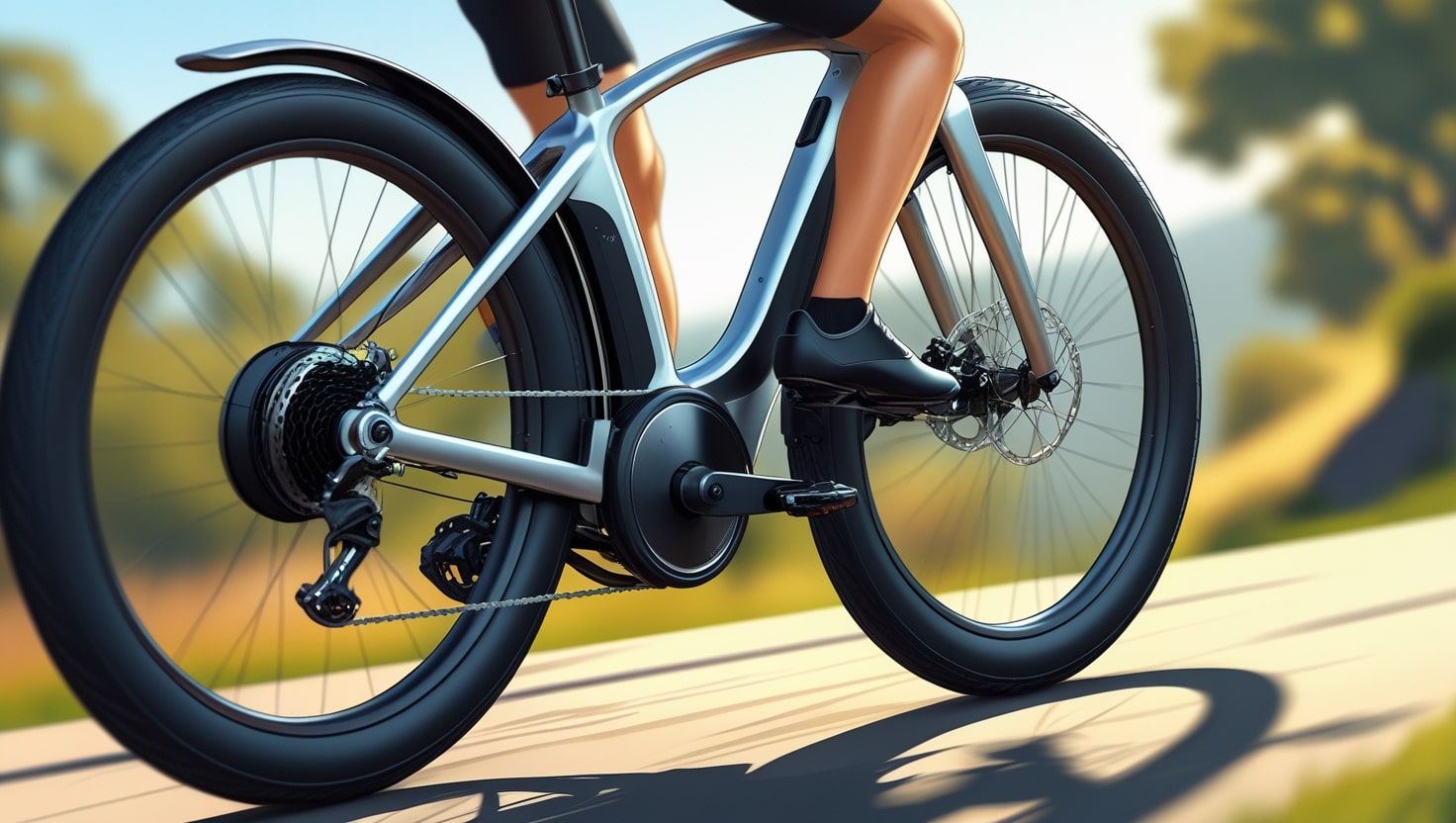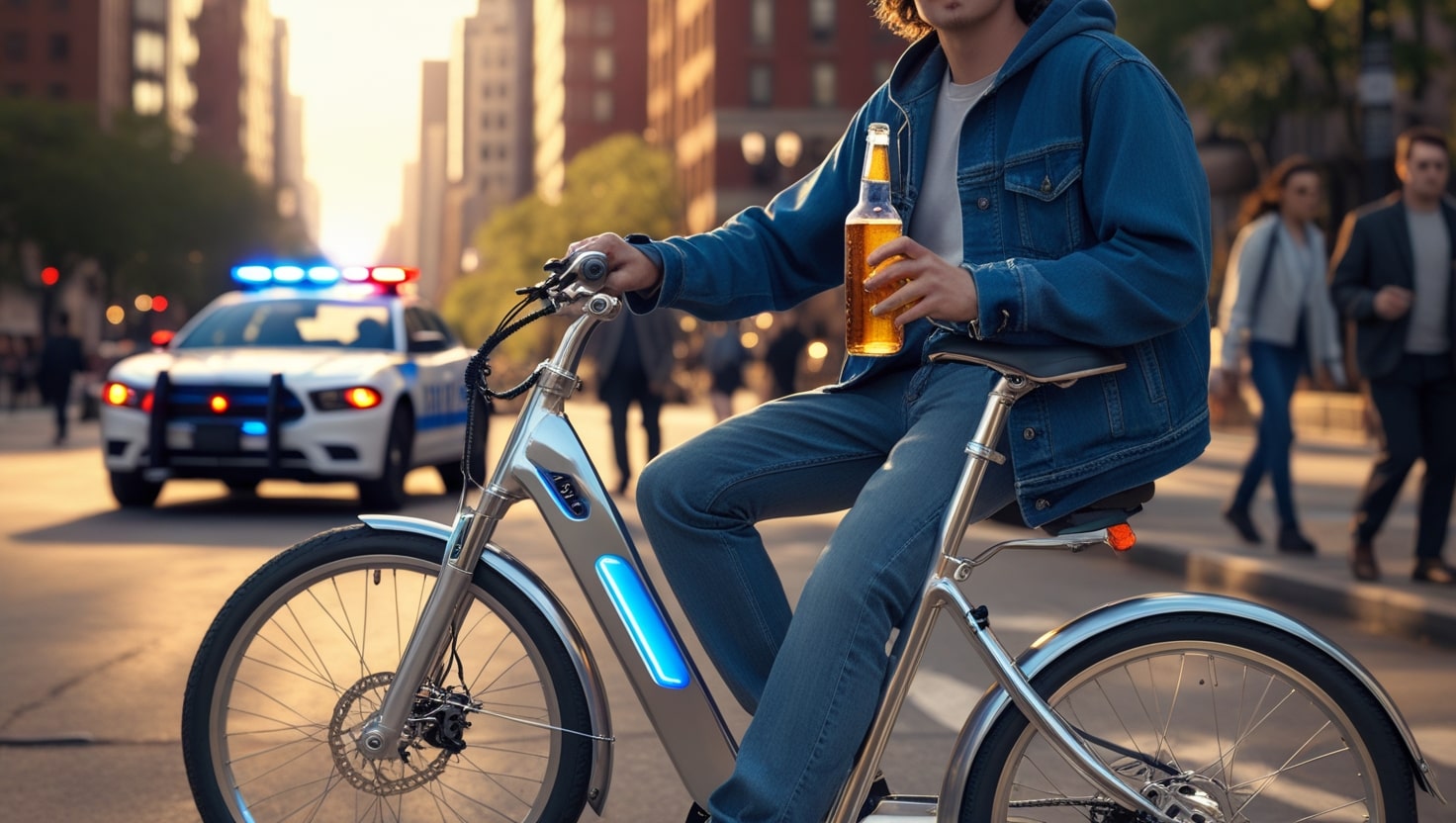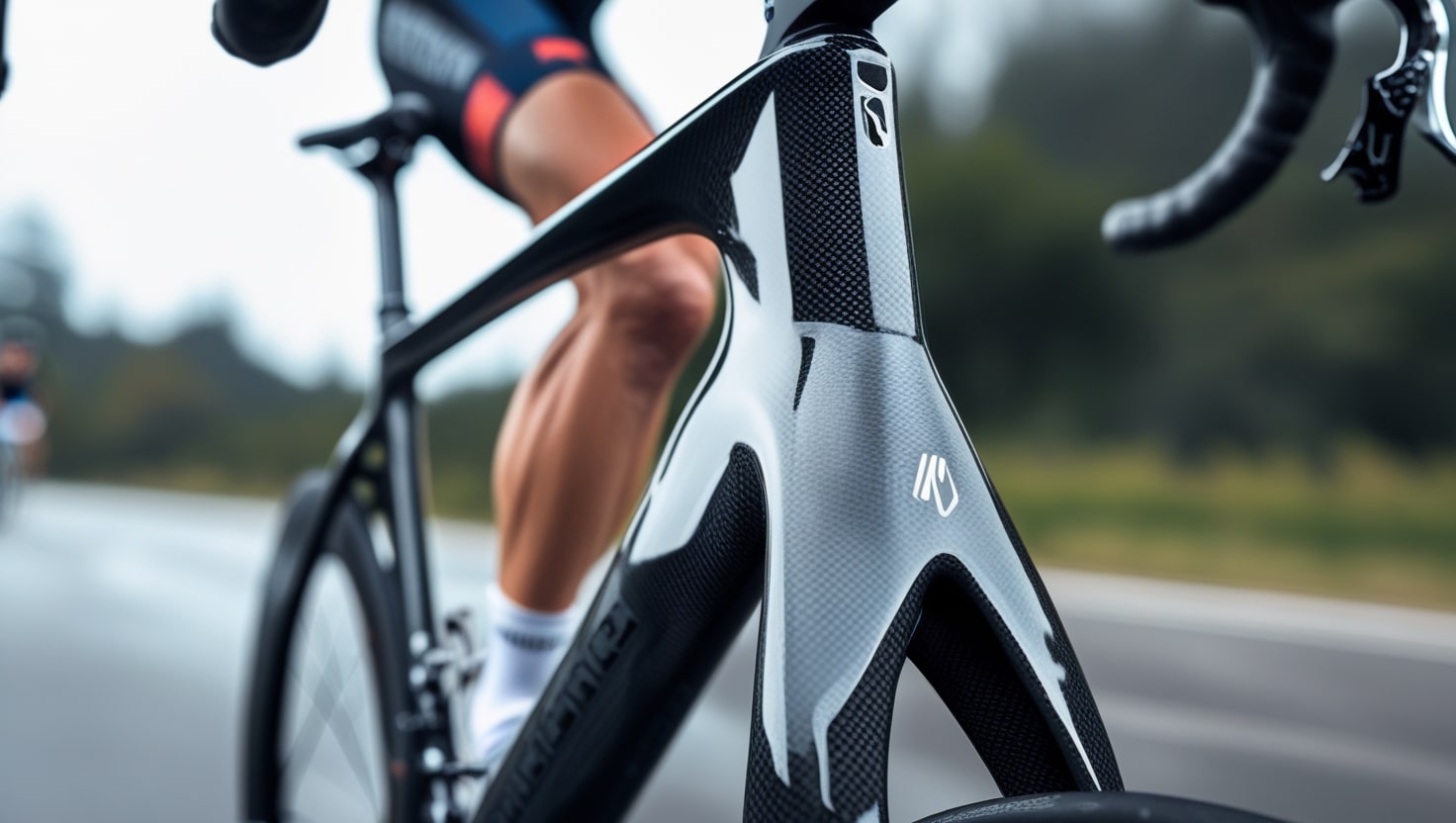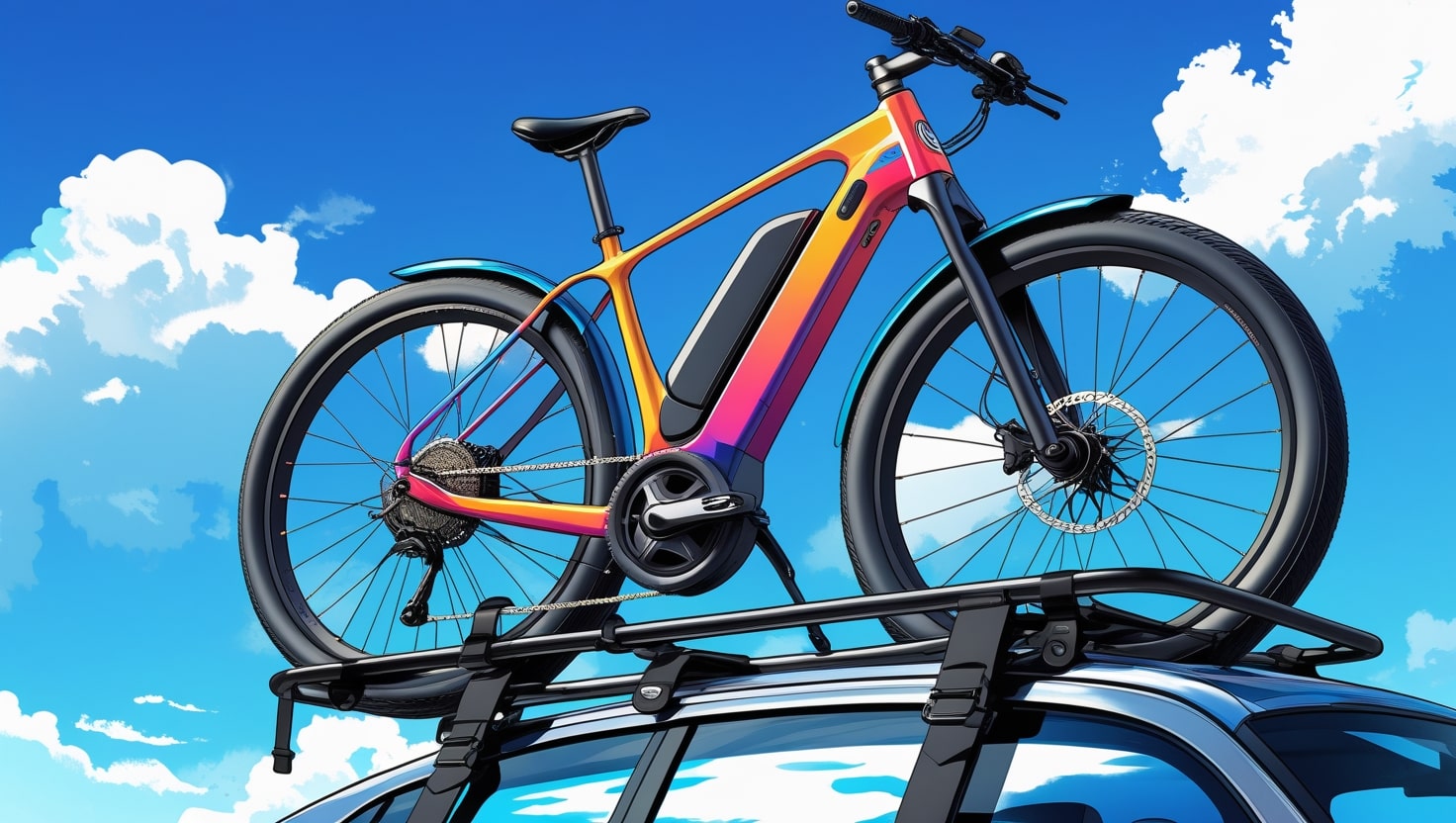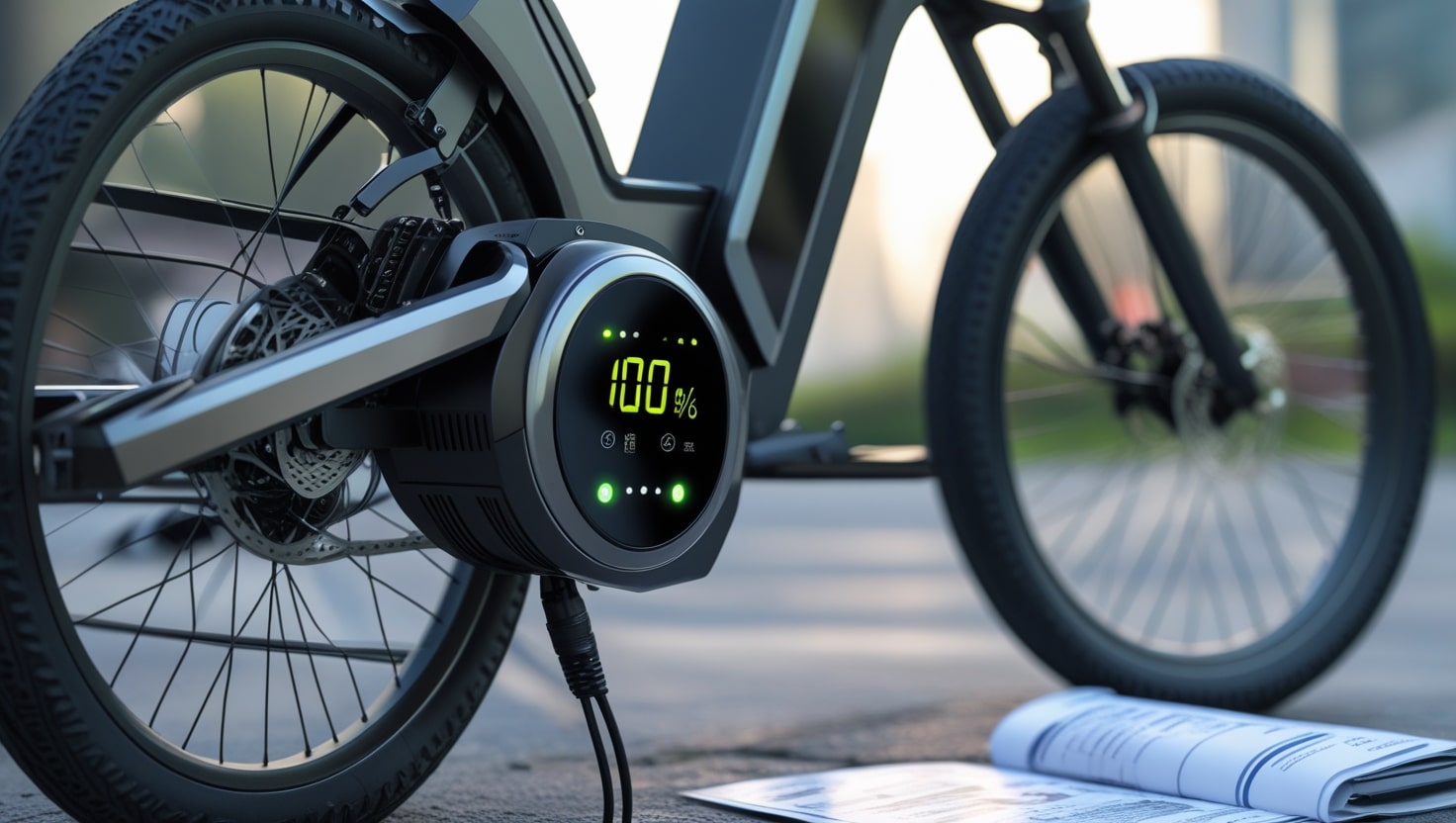When I first bought my electric bike, I wondered, do ebikes charge when you pedal? It’s a common question among those new to electric bikes, and unfortunately, there are many myths about this. Here’s the reality: Most ebikes don’t actually charge their battery while you pedal. Instead, the pedaling you do is mainly for helping the motor to move the bike forward. While a few advanced models might offer the possibility of charging as you’re riding, this method is usually quite inefficient.
However, the industry is continuously developing more innovative solutions. Some manufacturers are beginning to integrate technology like regenerative braking systems or even capacitors into their latest EABs. These allow a small amount of energy to flow back into the batteries during braking, slightly extending the range. Still, if you want real power, you’ll likely need to plug your ebike into a regular power outlet after your ride.
How Do Electric Bikes Normally Charge?
Most electric bikes charge just like your phone or laptop—by plugging their batteries into a regular power outlet. Typically, the charging process involves using a standard charger to connect directly to either a removable battery or a built-in battery on the e-bike. From my personal experience, a full charge usually takes between 3 hours to 6 hours, depending on the battery size. Some higher-end models even feature fast-charging capabilities that significantly cut down the waiting time.
Although many riders might wish that simply pedaling could recharge the bike, most ebikes aren’t designed this way. Instead, manufacturers rely on highly efficient, lithium-ion batteries that require external charging to keep the bike moving. This is currently the most common and reliable method to maintain battery life and ensure smooth rides.
do ebikes charge when you pedal
Many people assume that when they put effort into pedaling, their electric bikes automatically generate electricity to recharge the battery. From my personal experience riding ebikes, this isn’t quite the reality. The pedaling power you use actually helps move the bike forward, working together with the motor. Although your legs share some of the work, helping the battery last longer, they don’t actively refill the battery or provide enough energy for actual charging.
There are a few experimental designs aiming to make this happen by connecting the battery system more closely to your pedaling, but these innovative designs aren’t yet widely available. Currently, the motor and pedaling functions remain mostly separate, meaning when you ride, your pedal action alone doesn’t effectively charge your ebike.
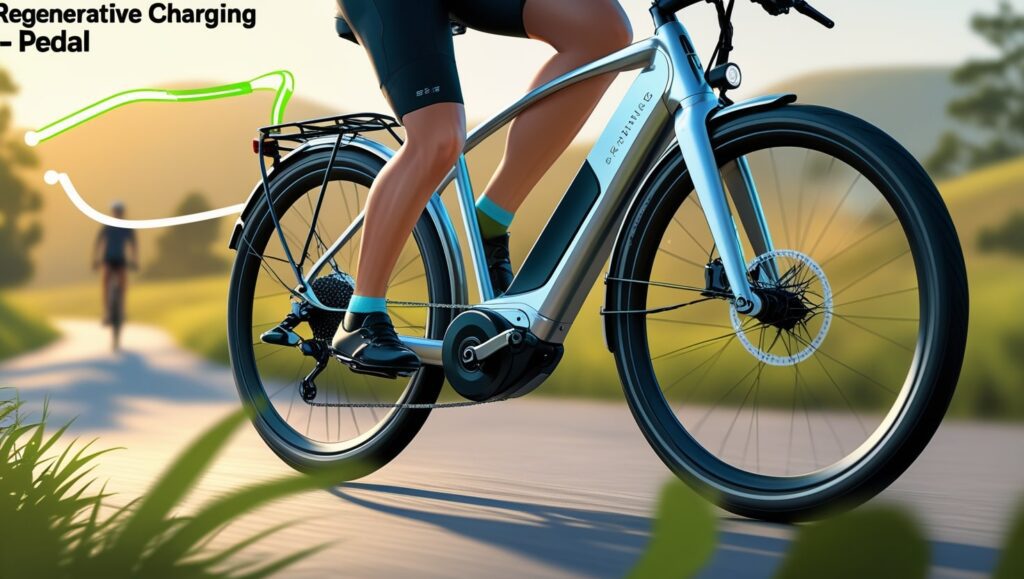
Regenerative or regenerative braking
Some modern electric bikes now use a smart concept called regenerative braking, or KERS (kinetic energy recovery system), allowing the battery to get partially recharged when you’re braking. This principle has been around for roughly two decades, and it’s quite common on electric cars, though still rare on bicycles. Personally, I’ve ridden ebikes equipped with this technology, and while it helps recharge a bit of energy, it’s not enough to completely rely on during regular rides.
How does regenerative braking work?
Regenerative braking is a fascinating technology often found in some advanced electric bikes. When you apply the brakes, a brake sensor triggers the motor to switch into reverse mode, converting the energy normally lost as heat into usable electricity. Instead of simply dissipating, this energy is cleverly captured and stored to recharge the battery. In my own experience riding a friend’s ebike equipped with regenerative braking, I noticed a slight but noticeable increase in range, especially on longer rides involving downhill stretches or frequent deceleration.
This type of regeneration typically works best on ebikes featuring direct-drive hub motors. Companies like ThirtyOne, based in Toulouse, have successfully developed innovative two-wheelers known as VAEs. One notable example is their hybrid bicycle, the Debut, which recharges during deceleration whether you’re moving backwards or cruising down a hill. Through an intuitive joystick, the rider can manually choose from four regenerative modes with the BionX conversion system, another well-liked technology that can handle anything from mild slopes to steep descents.
Despite being an effective form of motor braking, this system has its limitations. Realistically, the amount of charge you gain is a very small percentage, and it won’t fully recharge your battery. It’s been estimated that you’d need around 300 kilometers of nearly continuous downhill riding to become fully charged—a scenario that’s practically impossible. So while regenerative braking is intriguing, the overall return on investment can be questionable due to its complex nature and modest impact on battery life.
How effective is regenerative braking on an electric bicycle?
Manufacturers often claim that regenerative braking can increase the range of your electric bicycle by 10-20%, but in reality, achieving this can be very difficult.
From personal experience, if you’re riding on a flat surface in an area outside the city, especially over an extended period, you’ll rarely brake and might only recover around 1% of the regenerative power.
However, if your daily commute involves regular traffic, you’ll slow down regularly and could get an advantage with a regenerative braking rate of about 8 to 14%.
Terrain with frequent slopes and declines offers the best conditions to conserve energy, making this technology worth considering.
Still, instead of paying extra for this system, it might be wiser to invest in a second battery to practically double your bike’s range.
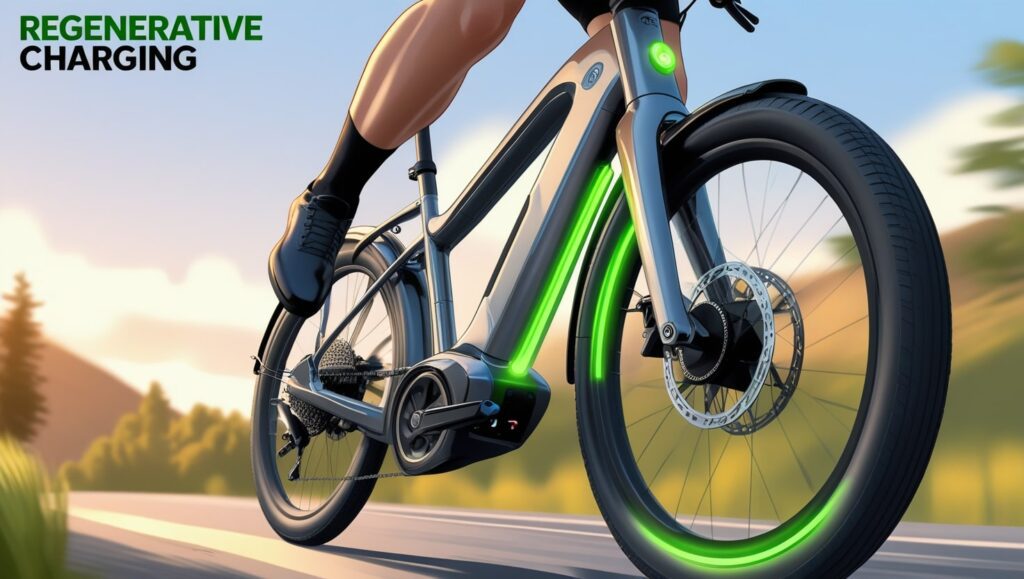
Experimental designs
The Pi-Pop: A VAE from France using innovative green technology, where a super-capacitor replaces the traditional battery. Its clever slogan, “the effortless electric bike,” comes from the fact that simply pressing the pedals stores enough energy to achieve an almost infinite range.
The Byar Volta: A relatively new electric bike that uses the energy produced by back-pedaling to recharge its battery, according to its manufacturer.The maker claims this charge method can almost fully recharge the battery during rides, though it’s among the more expensive models to purchase.
The Vello Bike+: An attractive folding model featuring advanced KERS (kinetic energy recovery system) technology. This system can automatically recharge the battery when descending or braking, and its lightweight design (weighing less than 10 kg) makes it a remarkable feat among modern ebikes.
Also Read: Fiido X Folding Electric Bike Review
Gas pedal and pedal assist mode
While riding an ebike, especially when using pedal assist, the energy produced from acceleration feels like it could somehow recycle back into the batteries. However, currently, there’s no reliable technology to achieve this. As an experienced rider, I’ve found that simply plugging the battery into regular outlets remains the safest and most economical option for most consumers.
Why Regenerative Charging Is Not Common in E-Bikes
Requires a Direct-Drive Hub Motor
Most modern e-bikes use either geared hub motors or mid-drive motors because they’re significantly lighter and more efficient. However, regenerative braking only works effectively with direct-drive hub motors, which are typically bulkier and heavier.
Low Energy Recovery
Due to their relatively lightweight design, ebikes don’t generate much kinetic energy during braking, especially when compared to heavier vehicles like cars. Riders typically only see a 5–10% increase in range even with regenerative braking, which is insufficient to completely replace conventional charging techniques.
Added Cost with Little Benefit
Including regenerative braking often leads to a noticeably higher price, yet the small energy savings you gain rarely justify the additional cost. Based on my own riding habits, I’ve found that simply investing in a larger battery is a smarter and more reliable way to significantly increase range.
Makes Pedaling Harder
Lastly, one drawback riders immediately feel with regenerative braking systems is the extra resistance or drag they create during pedaling without motor assistance. This can quickly make your ride less enjoyable, as the ebike feels heavier and harder to pedal, especially uphill or on longer journeys.
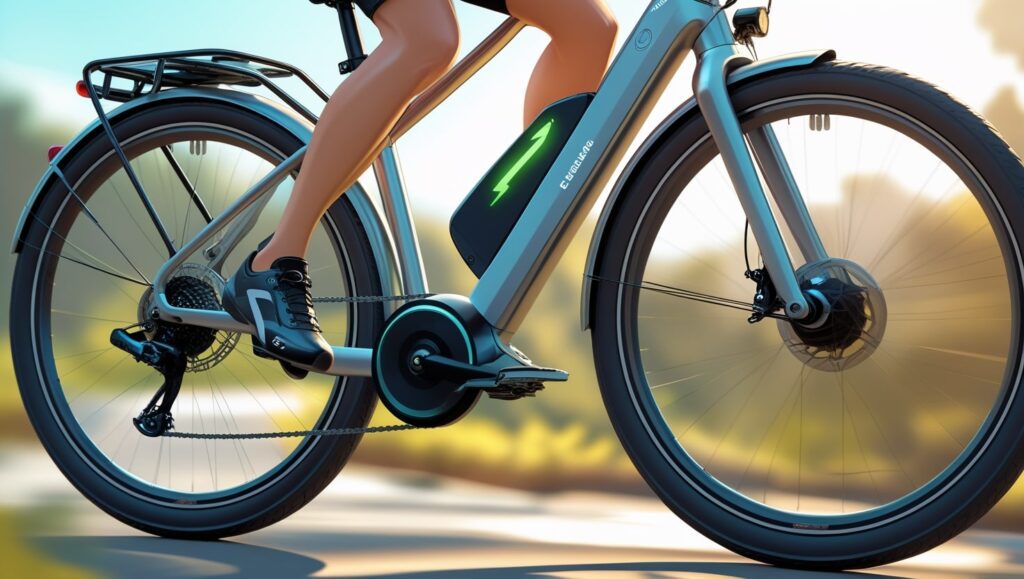
The Future of Self-Charging E-Bikes
While most e-bikes today don’t charge very efficiently from pedaling, several companies are actively exploring exciting advancements in self-charging technology. Innovative approaches like advanced energy recovery systems, lightweight supercapacitors, and even solar-powered e-bikes could significantly improve the way ebikes recharge on-the-go. As someone who’s tested various ebike models, I’m genuinely excited about these potential game-changer features becoming mainstream in the near future.
Currently, though, plugging your ebike into a charger remains the best way to keep it running. To extend your battery life while riding, you might want to try selecting an eco mode, using pedal-assist wisely, or carrying a spare battery. While regenerative braking and pedal charging exist, they remain mostly a bonus feature rather than a reliable power source—but ongoing technological advancements will certainly continue to improve these systems.
Conclusion
Unfortunately, the short answer to whether an electric bike can be recharged while riding is still a firm no—at least for the moment. While promising EABs like the Pi-Pop are being developed, the most least expensive and best solution today remains plugging your battery into a mains socket. As someone who has followed this question closely, I can say the technology is evolving, but currently, nothing beats a wall plug.
Also Read: Ohio Ebike Laws: What You Should Know Today
FAQs
Will regenerative braking damage the brakes on my two-wheeler?
No, you don’t need to worry—regenerative braking will not damage the brakes on your electric bicycle, nor will it cause them to wear out any further.
Can you really charge an electric bike by pedaling?
With most models of standard e-bikes, the idea that pedaling can convert motion into battery power is more myth than reality. While a few rare bikes attempt this, the energy that’s actually recovered during pedaling is extremely minimal and not enough to rely on for practical use.
Which electric bikes have regenerative braking?
Only certain e-bikes equipped with direct-drive hub motors can support regenerative braking, and even then, it’s limited. From what I’ve tested, examples like the Vello Bike+ and Byar Volta are good showcases of this feature. However, mid-drive systems and geared hub motors—which are more common—generally do not offer this capability.
Is regenerative braking worth it on an e-bike?
Usually not. In my experience, regenerative braking only adds a small amount of battery back—typically around 5% to 10%—and only under ideal conditions like frequent downhill riding. It’s more of a bonus feature than a true replacement for regular charging, so while it’s nice to have, you shouldn’t rely on it to extend your ride significantly.
How much energy does pedal charging recover?
In real-world use, very little energy is actually recovered from pedaling or braking, even with advanced regenerative systems. From my own rides, I’ve found it’s not enough to make a big difference, and most riders won’t notice any major increase in battery life. It’s helpful in theory, but in practice, the gain is minimal.
Why isn’t self-charging common in e-bikes?
Self-charging might sound appealing, but the trade-offs just aren’t worth it for most riders. For limited energy recovery, it frequently results in increased pedal drag, higher overall costs, and the need for larger motors. Based on what I’ve seen in the industry, most people prefer simpler solutions like larger batteries or swappable power packs, which are more practical and reliable for longer rides.

